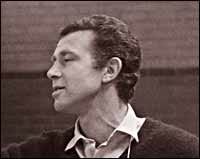In our London Weeks-series we want to dive deep into Bob Dylan’s first trip outside of North America. This often overlooked trip was more important for his career than most fans might imagine.
We will deliver bite-sized pieces of a puzzle, bring together the whole story of Bob’s first trip abroad.
We are coming to the end of 1962. It was an eventful year for Bob Dylan in many ways. His first album was released, and he is already in the middle of recording his second album. By now, he has long been a regular at New York's most prestigious folk establishments, places like Gerdes Folk City and the Gaslight. Greenwich Village has become the much-quoted comfort zone for Bob Dylan. He has quickly made many friends and established important connections.
But how would a Bob Dylan, whose first album flopped, sell himself outside of this comfort zone?
Why was this first overseas trip such an important point in the early career of 21-year-old Bob Dylan?
Join us on a journey to London, over 60 years back in time, to see how this first trip, of which we can actually tell so much about, affected Bob Dylan's subsequent career.
Madhouse On Castle Street
Bob Dylan is about to leave North America for the first time in his life. Philip Saville, who saw him play in a club in Greenwich Village, wanted to hire him as one of the actors and singers for a BBC play in London.
Philip Saville was 35 when he hired Bob to come to England and paid the remarkable amount of $2000 plus air fare to get “Bobby The Hobo” over. He was born in 1927 and worked in television as a director since the 1950s.
Above: Philip Saville
In his great book “Bob Dylan in London - Troubadour Tales” KG Miles and Jackie Lees describe the play:
The play, set in an English boarding house, was written by Evan Jones. One of the lodgers locks himself in his room, leaving a note stating that he has decided to retire from the world until the world has changed. Rehearsals began and it soon transpired that Dylan was finding it impossible to deliver his spoken lines. […] In the end, he delivered just one line: “Well, I don’t know, I have to go home and think about it.”
Bob Dylan performed four songs for the play: “The Ballad Of The Gliding Swan” (which he had re-written), “Blowin’ In The Wind” and two American Traditionals: “Hang Me, Oh Hang Me” and “Cuckoo Bird”.
The play was an example "of his (Saville’s) interest in psychological states and subjective viewpoints", according to Oliver Wake.
Bob Dylan left America, bound for London on December 17th 1962. And he should not return until the end of January 1963.
What happened in between?
Which figures played a role in that time?
Which locations were important?
We’ll find out.





